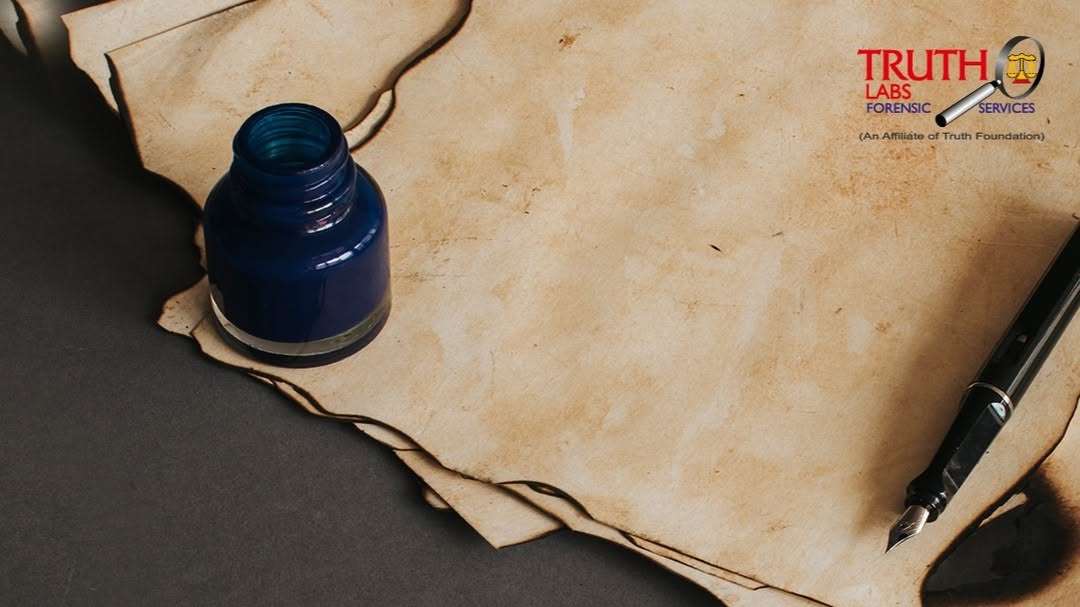Questioned Document – Checking documents through the ink used.
A very specialized area of forensics is the inspection and analysis of a questioned document through the determination of the ink used. Finding the age of the ink used is difficult but not impossible at least in some cases with adequate evidence for comparative analysis available to understand the backdrop. So, let’s look at what ink, paper, environment in which the writings were stored, etc., and based on that, how we could attempt ageing it.
Ink is said to have been developed by the Egyptians and the Chinese around the same time in the 23rd century. The components ranging from dyes and pigments mixed with stabilizer polymers, liquid solvents, fillers.
To determine the age of ink the factors to be considered are ink composition, paper properties and exposure to light and humidity. It is nearly impossible to control or even know the storage conditions for documents.
One of the techniques to determine age is to identify the ink’s composition. By doing so, a comparative analysis is run with the manufacturer’s composition which can be estimated for the year of manufacturing. So, if a document is claimed to be made in 1997 but the ink on the page matches with components manufactured in 2007, the document is fraudulent.
Gas chromatography- Mass spectroscopy is the current widely accepted method for testing age of ink, but this would involve a portion of the written ink to be destroyed in the process. Hence, this is not recommended or commonly performed for cases.
Determination of the age of paper is an approximation process that is still experimental. The various components in the paper can be analyzed for their paper dating. The methods being experimented on include colour analysis of the paper for gray level, RGB and HSV analysis. Optical Brightening Agents in Paper can also be analyzed to check for the period in which the document was produced. Small-Angle Neutron Scattering (SANS) can be used for measuring nano-sized water-filled pores of cellulose fiber on the papers.
There are various other methods, but the cost to result ratio is not promising for a commercial purpose. In legal scenarios, we require an accurate result, and since that is not possible, Age of Ink and Paper is a futile exercise.



